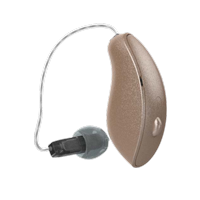More than 1 in 8 Americans currently lives with hearing loss, meaning that the chances are someone you care about struggles with their hearing on a daily basis. Most hearing loss cannot be cured, but it can be treated using devices like hearing aids to boost hearing and comprehension. Despite the effectiveness of hearing aids, less than 1 in 7 individuals with hearing loss are currently using assistive devices to help them hear.
While treating hearing loss is a great way for an individual to minimize their own hearing impairment, there are ways in which we can all make the communication easier for people with hearing loss. Understanding some of the challenges that go into living with hearing loss will help you make your own speech and communication more accessible.
Choose the Right Setting
Noisy and busy environments can affect people with hearing loss more than people with normal hearing. Lots of incoming sounds make it difficult to focus and hard to pick up on the strings of conversation. To have a good conversation, seek a setting that is quiet. Walls, carpeting and upholstery can help dampen noise in a large space with some noise. If you aren’t sure if a space will work for conversation, just ask.
Don’t try to start a conversation or get a person’s attention from a different room or across a big space. People with hearing loss may have challenges sourcing the direction of a sound in addition to picking a single voice out of a crowd. You want to be in the same room and in the direct sight line of the person you are trying to talk to. A person’s ability to hear may be supported by their ability to see you speaking, so opt for areas that are well-lit
Focused Communicating
Whether or not they consider it a formal skill, many people with hearing loss use some form of “reading lips” to help determine what is being said. Lip reading can be an important boost to comprehension, so it is important a person can see your face when you are speaking. For communicating with face masks, masks are being designed that incorporate transparent panels over the mouth.
Before diving into what you want to say, get the person’s attention by saying their name. The sound of a person’s own name is usually especially recognizable to a person with hearing loss and will help them bring their attention to listening, especially in a multi-person conversation. It is also a good idea to introduce the general topic of what you are saying before jumping into specifics. This creates more context clues for a person with hearing loss to respond to.
Patience
Alongside communicating clearly, build patience into your conversation. Being impatient can produce anxiety and frustration for all parties concerned, while taking the time to be understood helps communication be absorbed. Put in natural pauses to your main points of conversations, and take small breaks between sentences. While the pace of conversation may be slower, that doesn’t mean you should avoid complicated topics. People with hearing loss hear slower because they have to fill in gaps in what they hear using context clues.
It also is necessary to be gracious about repeating things when asked to. On occasion, particular words may be especially challenging for a person to parse so be open to rephrasing difficult spots in the conversation. Understand that hearing loss can be exhausting for the person living with it, and a big conversation may need to happen in several parts.
Use Technology
Think of your pocket-sized technology as a great resource for accommodating hearing loss. Today’s culture of texting and chatting makes written conversation easy and natural. If a verbal conversation isn’t working well, opt for one facilitated by screens. Even in spoken conversations, some things should be written as well as said. Giving information about an event, or a needed address or phone number should be written, emailed or texted.
When using an interface like video conferencing, choose a service that gives you the option to live caption your conversation. Live captioning capability and accuracy has grown in leaps and bounds over the past year with the necessary surge in online meetings. Live captioning relieves many of the comprehension challenges inherent to hearing loss.










